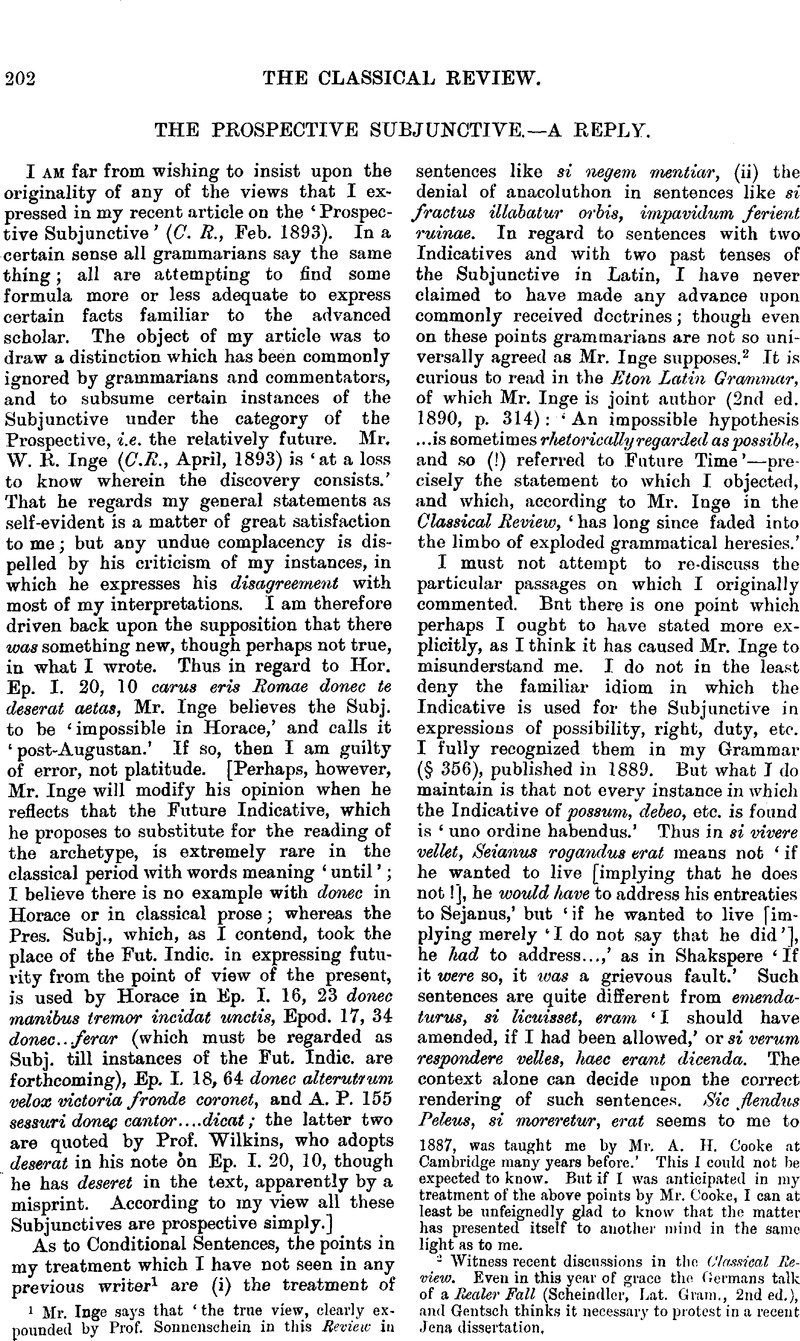No CrossRef data available.
Article contents
The Prospective Subjunctive.—A Reply
Published online by Cambridge University Press: 27 October 2009
Abstract

- Type
- Review Article
- Information
- Copyright
- Copyright © The Classical Association 1893
References
page 202 note 1 Mr. Inge says that ‘the true view, clearly expounded by Prof. Sonnenschein in this Review in 1887, was taught me by Mr. A. H. Cooke at Cambridge many years before.’ This I could not be expected to know. But if I was anticipated in my treatment of the above points by Mr. Cooke, I can at least be unfeignedly glad to know that the matter has presented itself to another mind in the same light as to me.
page 202 note 2 Witness recent discussions in the Classical Review. Even in this year of grace the Germans talk of a Realer Fall (Scheindler, Lat. Gram., 2nd ed.), and Gentsch thinks it necessary to protest in a recent Jena dissertation.
page 203 note 1 I did not deny that the Imperf. may refer to past time (= ‘it would have been’); I only meant that the Perfect is more common in such cases. Does Mr. Inge deny this? See Madvig (Eng. Transl. 5th ed.) § 348 e, with Obs. 1, and the instances in Dräger2, § 550 and § 140 b—d. I have recognized both eram and fui in my Grammar, p. 142, as legitimate in past time.
page 203 note 2 I avail myself of the opportunity of correcting two misprints in my article: (i) p. 9, col. 1, 1. 41 Ego (for Ergo); (ii) p. 10, col. 2, 1. 42 ‘reported (for repeated) without obliquity.’




